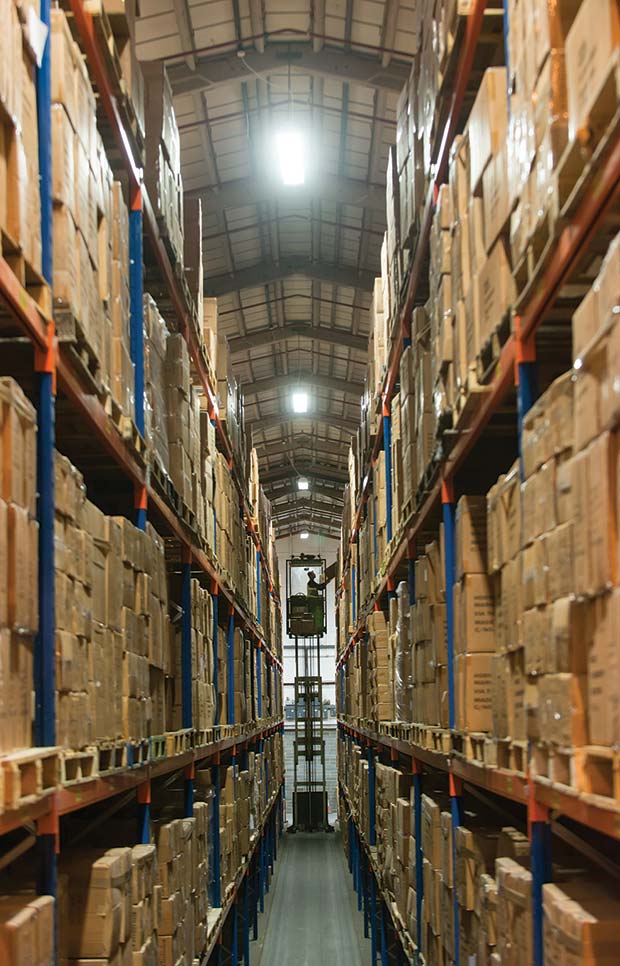Dazzled by the array of LEDs on offer? Colin Lawson of Tamlite Lighting cuts through the hype to offer the top five factors to bear in mind when choosing LED products for industrial applications.
![Colin-Lawson---Head-of-Sales-Marketing-and-Product-Development-at-Tamlite-[2]](https://warehousenews.co.uk/wp-content/uploads/2014/11/Colin-Lawson-Head-of-Sales-Marketing-and-Product-Development-at-Tamlite-2.jpg) Promising low energy use and long lifespans, LEDs are top of the wish list for many companies in the warehouse and logistics space. However, with so many different products to choose from – at very different price points – how can you be sure you’re getting the right light for your warehouse?
Promising low energy use and long lifespans, LEDs are top of the wish list for many companies in the warehouse and logistics space. However, with so many different products to choose from – at very different price points – how can you be sure you’re getting the right light for your warehouse?
1. Consider your colour options
The quality of your light and the way that it reproduces colours are aspects of lighting that are easy to overlook. Yet, in warehouses where staff are picking stock and reading labels, clarity of light and natural-looking colours are extremely important. The warmth or coldness of your lighting can also affect staff morale and productivity.
Look carefully at an LED product’s colour temperature level, which is measured in Kelvin (K). The most popular level, in use for decades, is 3500-4000 K, which creates a comfortable, warm-white colour appearance. LEDs with a higher, colder temperature level may still be appropriate, but only in spaces that don’t see a lot of staff activity.
Also important to consider is the product’s Colour Rendering Index (CRI), which affects how the colours of your surroundings look under the lights. Low-quality LEDs are likely to render colours poorly and, under this type of light, some colours will look distorted. CRI is measured on a scale from 1-100. Bear in mind when considering LED options that the minimum acceptable CRI is 85 where people are present for long periods of time.
2. Make sure all the boxes are ticked
LED is still a new technology, yet many people tend to use it as a one-size-fits-all solution. In fact, LED is no silver bullet, and it’s vital to scrutinise whether a particular LED is actually fit for purpose. Think beyond energy savings data and look at light output and the robustness of the fitting. After all, energy-saving is useless if the product doesn’t do its job.
For warehouses, the key issue may be that the product is bright enough (without glare) to provide good illumination at ground level. Look carefully at figures relating to the light output – is this the net figure, including losses from the luminaire? This is important to know, because the output from the LED will, in most cases, not be the output once the LED is enclosed within a luminaire.
3. Scrutinise your supplier
Nailing down the truth about net light output is just one area where you need to be careful. In this new and rapidly-evolving arena, there remains a lot of confusion surrounding the performance of LEDs. And, unfortunately, some disreputable suppliers may exploit this confusion. This makes it extremely important to demand credible figures to back up any claims made by your LED supplier.
4. Don’t be dazzled
The hype surrounding LED can be dazzling – but so can the LED itself! LEDs, by their very nature, give off light in a laser-like beam, producing high-intensity glare. This can have serious health and safety implications.
In a warehouse that uses forklifts to load and unload goods from high racking, lighting glare is not only unpleasant – it can be potentially dangerous. If a forklift driver glances up directly at the laser-like lighting, he’ll be dazzled. Even momentarily, this could cause him to lose control of his forklift, which could easily lead to serious injury.
For warehouse premises where staff will be looking up, limiting glare should be a top priority when choosing new lighting. In the past, this ruled out LED altogether. However, new-generation, high-bay LED products are being designed with glare control in mind. Tamlite’s in-house design team, in particular, has dedicated substantial R&D effort to developing an LED solution for warehouses. The result is HILUX HX LED, which has a high-performance portfolio of reflectors to ensure energy savings without dangerous glare.
 5. Look at all the energy-saving options
5. Look at all the energy-saving options
Don’t get complacent about energy-saving and feel that you’ve done all you can by choosing LED. To get the greatest savings from your lighting, it’s often prudent to use controls.
Consider LEDs with control options, which can sense when a space is unoccupied (and automatically turn off the lights) and monitor the level of natural light (dimming the artificial light accordingly). Modern lighting solutions, like the HILUX range from Tamlite, include controls that are built into the luminaire.
What’s more, although LEDs have incredible scope for energy-saving, they are far from the only energy-efficient option available in lighting. New-generation fluorescent lighting can often provide better light quality at a similar energy-saving rate to LED. Look carefully at payback periods and light quality (including glare control) to make sure LED really is offering you the best value for money.
The hype-filled LED marketplace can be a disorienting place, but if you ask the right questions and consider every option, it is possible to get the right light for your site.




Comments are closed.